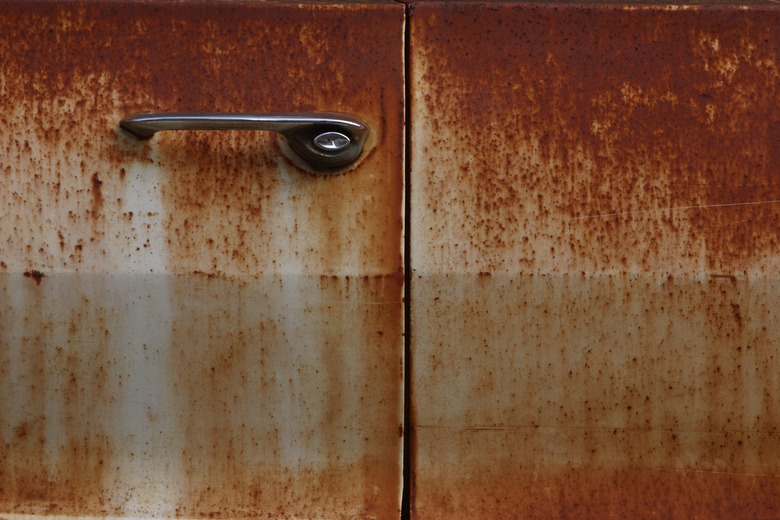Why Is My Refrigerator Door Rusting?
In general, whenever moisture comes in contact with metal, it presents an opportunity for rust to form. Rusted refrigerator doors are an indication that oxidation has occurred on the surface of the doors. Discovering the source of the problem may require some detective work. In the meantime, several optionsare available for removing the rust and restoring the refrigerator's exterior.
Causes
Causes
When warm air from the kitchen meets cold air from the refrigerator, moisture develops. Your refrigerator may not have been properly insulated or coated by the manufacturer, causing moisture to collect on the inside or outside of your unit. Other causes include failure to promptly clean up spills or using the wrong cleaning products. For example, steel wool pads should never be used to clean the refrigerator, because the tiny particles left behind can form rust. Additionally, iron particles in your water supply can create rust if water is left on the surface of the appliance.
Rust Removal
Rust Removal
The first step in managing a rust problem is to clean off the rust. That may seem obvious but it's worth mentioning because painting over rust will not be successful over the long term. If the conditions persist that caused the rust, it will eventually bleed through the paint. Commercial rust removers, such as naval jelly, can be purchased at home improvement stores or online. You can also try sanding it off with 80-grit sandpaper if the rust is not extensive.
Solutions
Solutions
Once rust has been removed from small areas, the affected areas can be recoated with touchup paint. These special paints are available at many home improvement and appliance stores. If the rust has caused extensive damage, you will need to choose other options. If the refrigerator is new and under warranty, consider contacting the manufacturer or retailer. Refrigerators out of warranty can be disassembled and repainted at an auto body shop but you should weigh the costs of repainting against the initial cost of the appliance.
Preventive Measures
Preventive Measures
Clean up spills as soon as they occur. Wipe the refrigerator dry both inside and out with a soft cloth after cleaning. Use cleaners recommended by the retailer or manufacturer. Mild soap and water is better than commercial cleaners that may contain ammonia or bleach. Periodically wipe down the exterior of the refrigerator with a commercial lubricant such as WD-40 or car wax.
